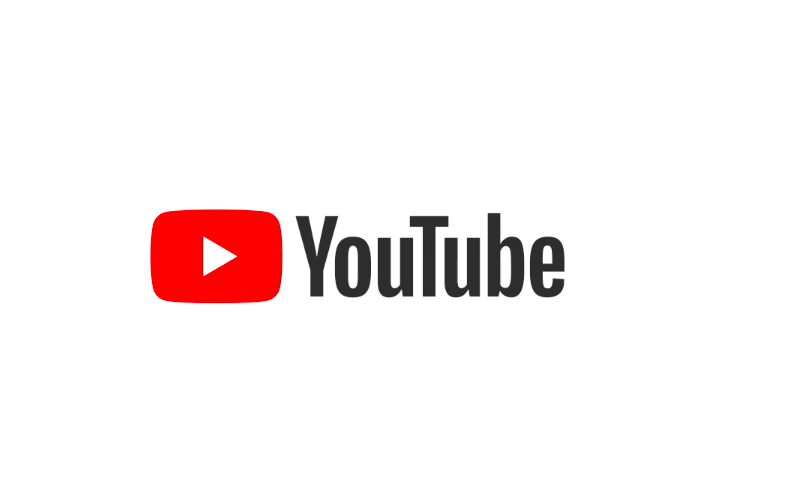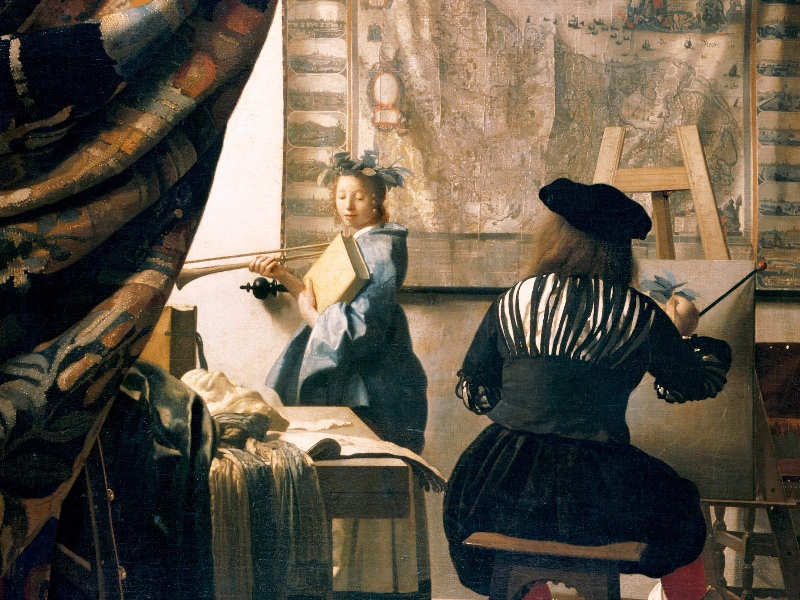Your Art Career Via YouTube
9/23/2017
Your art career via youtube
Lorem Ipsum is simply dummy text of the printing and typesetting industry. Lorem Ipsum has been the industry's standard dummy text ever since the 1500s, when an unknown printer took a galley of type and scrambled it to make a type specimen book. Lorem ipsum dolor sit amet, consectetur adipiscing elit. Vivamus leo ante, consectetur sit amet vulputate vel, dapibus sit amet lectus.


How effectively does our gallery utilize YouTube and other video-sharing websites to promote the work of our artists? Very effectively. The proof is in Leopold Gallery’s client feedback and our rising sales. We’ve successfully utilized YouTube to promote the artists Phil Epp, William Lobdell, Jane Pronko, Lyman Whitaker, and dozens of others. We’ve made videos of installations for the Kansas City Chiefs, the Morris Arboretum, the Kansas City Royals, KU Medical Center, and on and on. We’ve even made a video of our gallery pup, Moses, who we rescued from a life of abuse and neglect. You can find that one here.
How effectively do artists use this same technology? Typically not well, since they’d rather just create. But this practice has become relevant, so let us help you with the process and techniques. You’ll be surprised by how easy it is.
But first, let’s discuss some basics. According to statistics, there are roughly 2100 years of video uploaded to the Internet annually. A tiny portion of these become famous. Most do not. Yet in the video realm, this is where you go if you want to enhance your web presence as an artist. You don’t need to have a viral video to do this; you just have need decent videos that galleries and collectors can view. Corporations and pop stars all do this—or have people do it for them. You can too.
In the current era, social media is integral to establishing any career. Along with sites like Twitter and Facebook, YouTube is a versatile tool for building your digital footprint. Unlike your environmental footprint, you want your digital footprint to be big. Clown-shoes-big. In that way when someone (other than you) Google’s your name, they have all the possible clicks they could want.
Go ahead and get on YouTube now. Type “artist” in the search bar. As you’ll see, there is a massive online community of artists posting videos about who they are and what they do. Please notice that, if they’re Internet Savvy, they’ll post links to their websites and online portfolios. You may think this is selling out; there are a few who do. However, the rest of the world seems to disagree—especially galleries and collectors.
The Internet is a major part of our contemporary culture. Whether you lament or embrace this fact, it’s still a fact. It’s the online videos that provide a sense of human contact to this vast, pixelated world. It also can help you find your audience.
So how do you do it?
How to Begin
You begin of course by making a video. Start with a basic camera that has a video mode, getting a microphone for it if necessary. But if you don’t have that, just use a webcam or smartphone. Your video can be of anything. You’re an artist, so get creative. Maybe you want to tell a story about how you were inspired to craft a particular piece, or perhaps record yourself working on that piece. You can make how-to videos (often the most popular), testimonial videos, or just vlog—Internet lingo for video-blog.
The important thing is that you showcase your work and who you are. Why? Take a moment to imagine what it would be like to see the video diaries of Frida Kahlo. Imagine being able to watch, actually watch, Rodin putting the final touches on The Burghers of Calais. You post videos of yourself and your work for your potential clients and admirers.
But if you just don’t want to undertake it yourself, no worries. Go to a local university or community college, and find a film student to do it for you. They likely won’t charge a great deal and will bring an interesting perspective to the challenge of creating short films about your work.
Rules of a Réalisateur
Keep your videos short. Short is somewhere between five seconds and two minutes. Two minutes is generous. YouTube is a place of instant gratification, and you don’t want your audience to get bored and click on something else. Also, shorter videos are easier to upload and easier to edit.
Speaking of editing, don’t worry about creating the next cinematic masterpiece. In fact, YouTubers prefer to see organic, rather than raw videos. It makes the content more relatable. Most computers come with their own video editing software, which is easy to learn how to use. If you’re stuck, you can always…look up a how-to on creating videos. There are dozens of them. Of course, you could avoid editing altogether. Be a hardcore filmmaker and attempt to do it all in one take. That’s not as interesting but is frequently done.
You may have heard the old advertising mantra that content is king. Well, as far as online videos, content is king, queen, bishop, knight, rook, and pawn. Treat your videos as an art form in and of themselves. Please don’t make something you don’t care about, because viewers will sense that. Figure out what your audience likes, but figure out what YOU like first. If it inspires you, chances are it will inspire your viewers.
Upload. Fail to Upload. Repeat
So you’ve got your video(s) all ready to go. Now what? Upload. But please prepare yourself for the frustration of not having the video in the right format or size. It’s going to happen. You’re going to detest your computer. You may well wind up detesting this article. It doesn’t matter. Do it again. Each video-based website has different restrictions and size limits for files. If you’re having trouble, just research the issue online. Video sites are designed to be user-friendly, once you understand the process.
Now, as far as choosing which website to upload your video to, there are a few options, YouTube and Vimeo tending to be the best at this time.
What’s the difference between YouTube and Vimeo?
While YouTube is the big dog in terms of viewers and content, Vimeo offers a smaller community that is intimate and engaged. Vimeo commenters are known for their genuine interest and constructive criticism. YouTube commenters can have a tendency to cause you to lose your faith in humanity. Also, there are no thirty-second advertisements or banners on Vimeo, and the website layout is, in our opinion, simply better.
That said, Vimeo as a website for content is mostly professional-grade videography. It’s a website for filmmaking, which is an art form in and of itself. In short, anything that is shot on a webcam probably won’t fly. Also, Vimeo isn’t as common a website, so you may not get as many viewers. Lastly, there is a limit on how much content you can upload, unless you upgrade to a paid account–$59.95/yr. These, among other reasons, are why YouTube tends to be preferred.
Ultimately the choice is yours. Heck, upload videos to both websites until you figure out which one works best for you. Just don’t upload the same video twice.
One more thing: be aware that both YouTube and Vimeo have extensive copyright restrictions. This is only a problem if, for example, you choose to include someone else’s music in your video¬–-and that someone happens to not be cool with it. But as an artist, you doubtless understand the ethics of this. There is a wide array of music and sound effects that are already in the public domain. Use those, or create your own soundtrack.
Time to Share
Once you’ve gone through the process of filming, editing, and uploading your video, it’s time to share it. This is where you get to see the beauty of having video content online.
If you have a website or a blog, you can embed the link to your video so it can be viewed right then and there. You can also share the link on Facebook, Twitter, Google+, LinkedIn, Tumblr…every social media site has video compatibility. Even if you don’t go the social media route, you’ll still have a link to email around.
Don’t be discouraged if after a few weeks your video only has a few hundred views. Or fifty. Or one…and it was you. Give it time, and remember that seeking Internet stardom isn’t your priority.
Your main reason for uploading that video is to promote your artwork. Maybe an interested collector will Google your name and find a video of you working on a piece they want to buy. Maybe a gallery is interested in your process, or a possible investor wants to help support your career. These are multiple reasons why online video promotion can be so beneficial, but it all begins by making sure that people can easily find the videos you create.
After you’ve created your first video, it’s advisable that you make others. Try to produce a new one between once a week and once a month. Keep the content original and engaging. Does it sound frustrating and tiresome? It can be, but only if you let it. Otherwise, it should prove engaging and, in the end, very much worthwhile.
How Does Leopold Gallery Utilize Videos?
• We always upload new videos to our various Social Media sites.
• We always post a link to new videos in our monthly newsletter.
• We email relevant videos to clients, depending on the nature of their interests.
• We post select videos on our website.
Have any of our videos gone viral? Not yet, although some have had 2200 views. But that isn’t the point. While one of them might eventually go viral, what matters most to us is how we utilize them in Social Media and via email in promoting the gallery and our artists. In that sense, they’ve been more than worth the effort it took to create them.
If you want to view a few of our videos, just go to leopoldgallery.com. You’ll likely find them informative. But just as importantly, do a search for artists you admire on YouTube. See what you find. If you like it, do something similar.
In Sum
Creating a successful art career can at times be frustrating. The endless self-promoting (on top of mastering your craft, struggling with inspiration, and just living your life) can be tiresome—or fascinating, depending on how you go about it. Nonetheless, this is the life you were born for, and you know you wouldn’t be fulfilled doing anything else.
You’re not just making the video so others can see your work. These simple films enable you to see yourself and your work in a new light. That alone can make it very much worthwhile. Just don’t get lost in the process, or in the Internet Vortex itself. Naturally, your work comes first. All this other stuff is second—but a very important second.
by Dennis Dorrell
with Paul Dorrell
